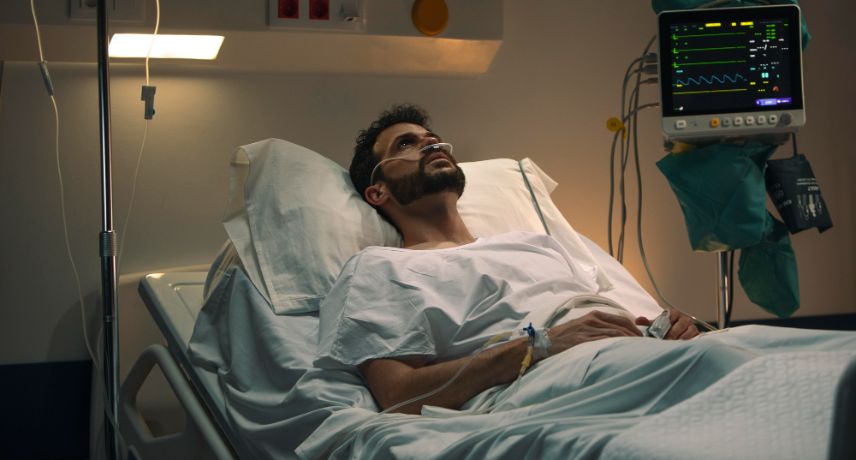A pressure injury, formerly known as a pressure ulcer or bedsore, occurs when different kinds of forces are applied to the body, resulting from prolonged pressure on the skin and underlying tissues. They mostly form in regions with bony structures beneath the skin, such as the hips, buttocks, head, ankles, and heels. People at high risk are those with limited mobility. It is often said that a pressure injury is life-threatening. However, it is largely preventable.
What are the main causes of pressure injuries?
- Pressure: Constant pressure on the skin from remaining in the same position for a prolonged period, compromising blood circulation to that area.
- Shear: Shear damage, or a dragging force, can occur when the head of the bed is raised, and the body slides down. The skin sticks to the sheets, but internal structures move and are damaged.
- Moisture: Fluids (sweat, urine, faecal matter) that remain on the skin can cause the skin to become overly wet, as well as causing chemical damage increasing the risk of pressure injury development.
There are mainly four stages of pressure injury, classified according to the severity of the wound:
- Stage 1: In this stage, discolouration of the skin occurs. The skin appears red in lighter tones and blue or purple in darker tones.
- Stage 2: This stage involves superficial damage to the skin. The top layer of skin is lost and may look like a blister. At this stage, the top layer of skin can repair itself.
- Stage 3: A deeper wound occurs in this stage, with total loss of skin. The wound is open, extending to the fatty layer of the skin. Muscles and bones are not visible.
- Stage 4: This stage is the most severe. The wound extends down to the bone. Muscles and joints are most prone to infection, which can be life-threatening.
In addition, there are two other categories: Unstageable and Suspected Deep Tissue Injury.
Who is at risk of developing pressure injuries?
Pressure injuries mostly occur in people with limited or no mobility. They may also occur in people who have splints or prosthetic limbs, as the skin in those areas can become irritated, leading to a pressure injury. Elderly people are particularly at risk as their skin becomes thinner with age.
What are the strategies for bed sore prevention?
- Change the position of the patient every two hours when lying down and every 20 minutes when sitting.
- Ensure there are no wrinkles in the bed sheet or moly sheet on which the person is lying, as wrinkles can cause pressure injuries.
- Ensure no body parts of the patient cross one another.
- Ensure that the catheter or oxygen tube (if needed) does not come underneath any body part of the person.
- Ensure proper nutrition and fluid intake.
- Minimise the time urine or stool stays in contact with the skin in immobile patients.
We strongly believe that pressure injury prevention is better than cure. Following the precautionary measures can stop the development of pressure ulcers and save people from life-threatening situations. However, if they do occur despite our best efforts, various types of options for the treatment of bed sores are available depending on the stage and area involved.
